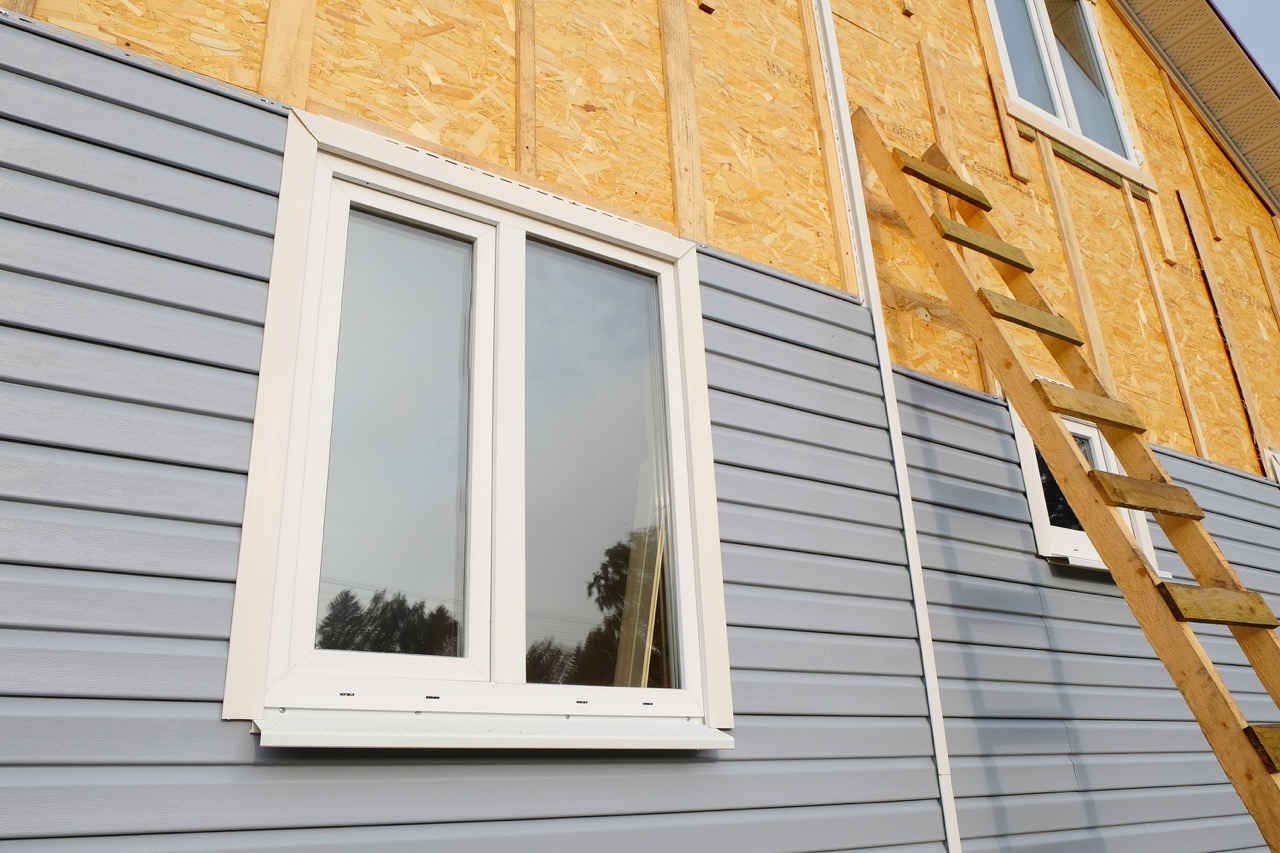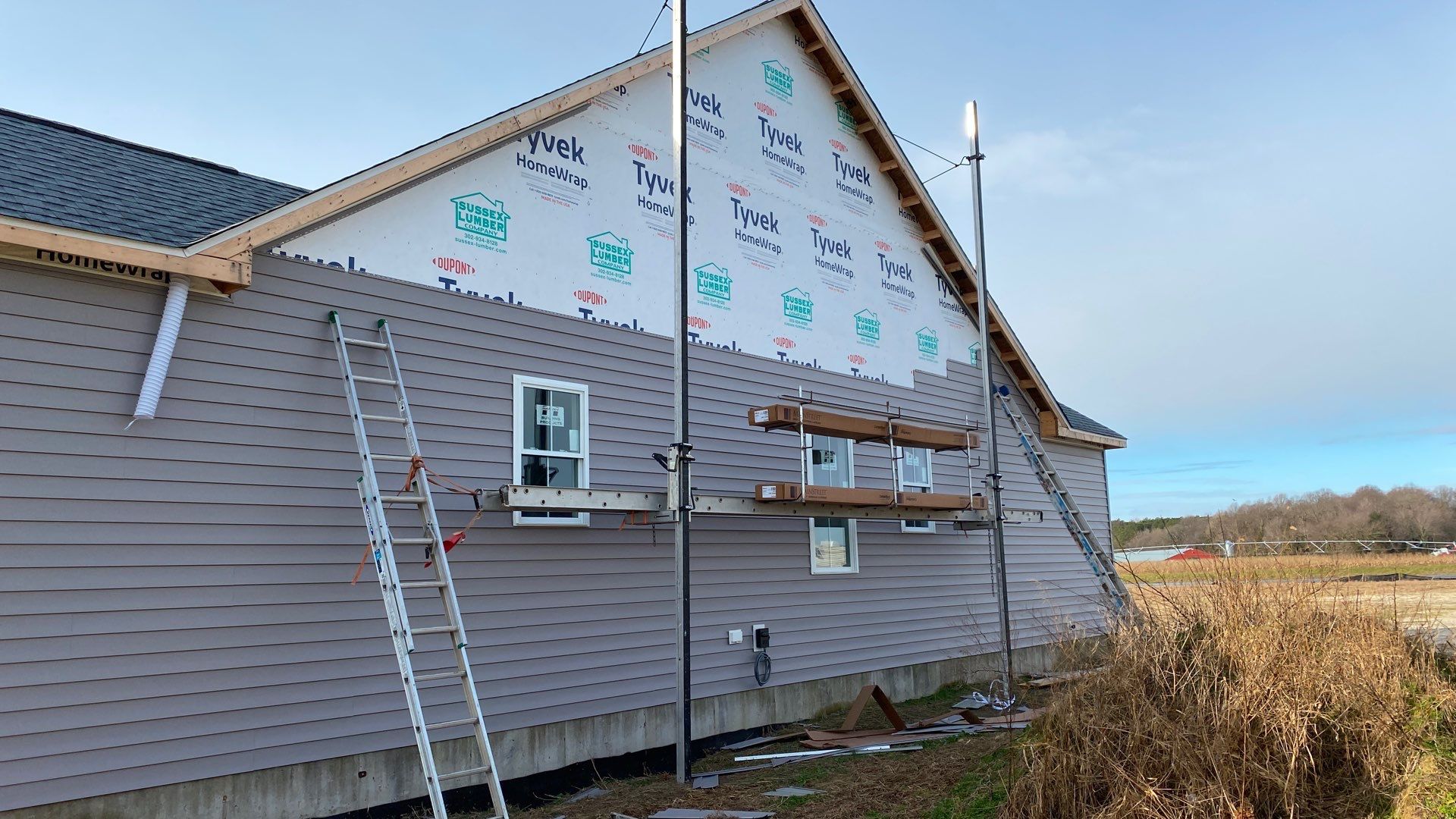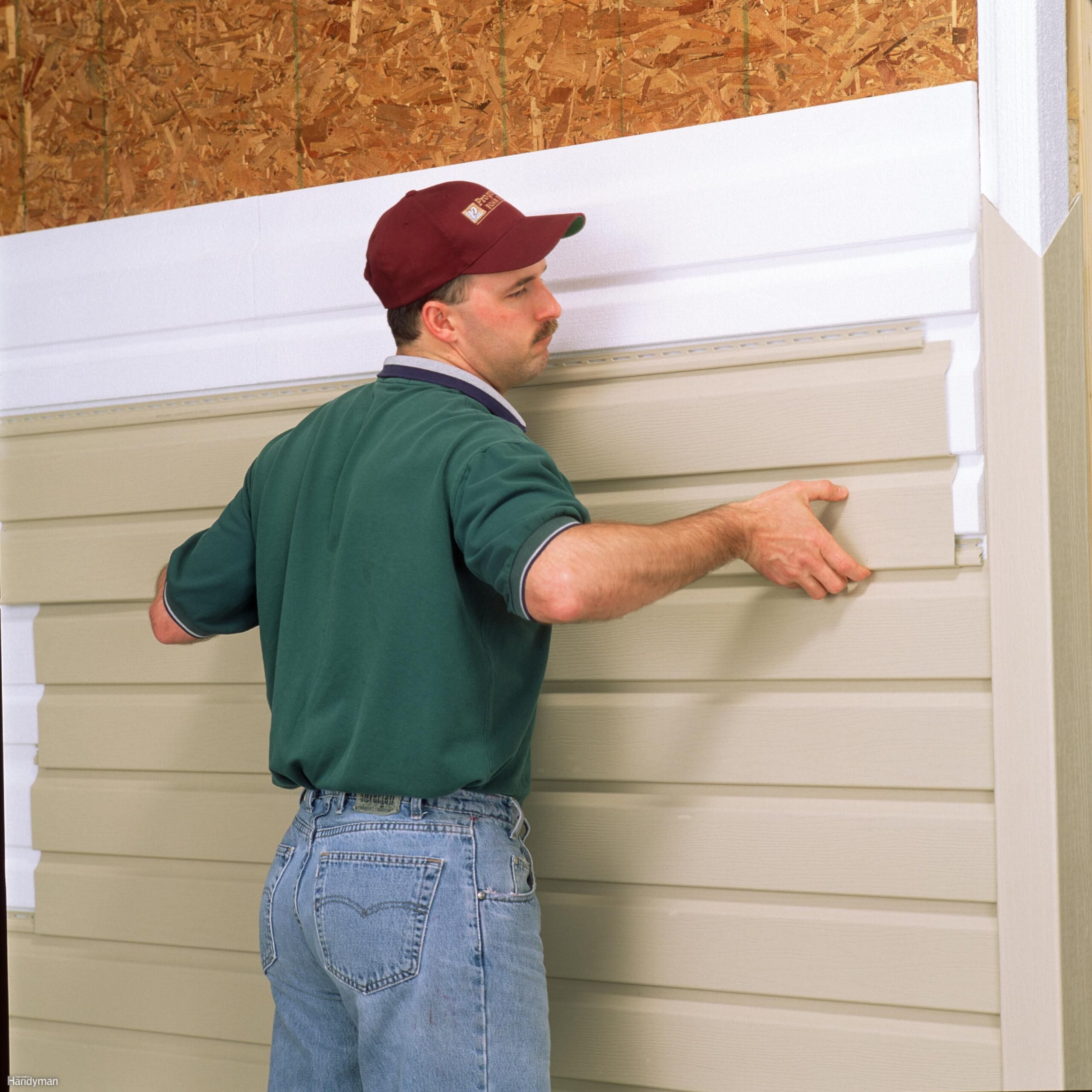Insulated Siding Cost Per Square Foot
Insulated siding cost per square foot varies wildly depending on several key factors. Understanding these factors—from material choice (vinyl, fiber cement, metal, etc.) and thickness to regional labor costs and your home’s existing condition—is crucial for accurate budgeting. This guide breaks down the costs, explores different siding types, and offers strategies to help you make informed decisions and potentially save money on your project.
We’ll delve into the installation process, highlighting potential extra expenses like permits and waste removal. We’ll also show you how to compare contractor bids and find cost-effective solutions, helping you navigate the complexities of insulated siding installation and achieve your desired outcome without breaking the bank. Ultimately, the goal is to equip you with the knowledge to confidently manage your project from start to finish.
Factors Influencing Insulated Siding Cost
Getting insulated siding installed can be a significant investment, and understanding the factors that influence the cost per square foot is crucial for budgeting and planning. Several key elements contribute to the final price, ranging from material selection to regional labor rates and the condition of your existing home.
Material Type and Specifications
The choice of siding material significantly impacts the overall cost. Different materials offer varying levels of durability, aesthetics, and energy efficiency. This table outlines the cost variations:
| Material Type | Thickness (typical range) | R-Value (typical range) | Cost per Square Foot (Estimate) |
|---|---|---|---|
| Vinyl | 0.04 – 0.08 inches | 2-4 | $3 – $8 |
| Fiber Cement | 0.5 – 1 inch | 2-4 (depending on thickness and composition) | $8 – $15 |
| Metal (Aluminum or Steel) | 0.02 – 0.04 inches | 0.5 – 1 (often requires additional insulation) | $7 – $12 |
*Note: These are estimated ranges and can vary widely based on specific product features, brand, and location.* Thicker materials generally offer better insulation (higher R-value) but come at a higher cost. The R-value, representing thermal resistance, is a key factor in energy efficiency and should be considered alongside the material cost.
Regional Variations in Pricing and Labor Costs
Labor and material costs fluctuate significantly across different geographical regions. This variation is driven by factors such as local demand, availability of skilled labor, and transportation costs.
| Region | Average Material Cost per Square Foot ($) | Average Labor Cost per Square Foot ($) | Total Estimated Cost per Square Foot ($) |
|---|---|---|---|
| Northeast US | $9 | $6 | $15 |
| Midwest US | $8 | $5 | $13 |
| Southeast US | $7 | $4 | $11 |
*Note: These are broad averages and may not reflect the precise costs in specific areas within each region. Factors like urban vs. rural location also influence pricing.*
Home Size and Existing Siding Conditions
The size of your home directly correlates with the overall project cost. A larger house requires more materials and labor, leading to a higher total expense. The condition of your existing siding also plays a crucial role. Removing old siding adds to the labor costs, especially if it involves extensive repairs or disposal of hazardous materials like asbestos. For instance, removing old clapboard siding and disposing of it responsibly might add $2-$5 per square foot to the overall project cost. Furthermore, significant repairs to underlying sheathing or structural issues can inflate the total cost significantly, potentially doubling or even tripling the initial estimates.
Types of Insulated Siding and Their Costs
Choosing the right insulated siding involves careful consideration of material, thickness, and energy efficiency. The initial cost will vary significantly depending on these factors, but the long-term savings from reduced energy bills can often outweigh the higher upfront investment. Let’s break down the options.
Different insulated siding materials offer distinct advantages and disadvantages in terms of cost, durability, and aesthetic appeal. The cost per square foot can fluctuate based on regional availability, installer expertise, and the complexity of the project. However, general ranges can be helpful for initial budgeting.
Insulated Siding Material Costs and Properties
The following points compare and contrast the cost per square foot of various insulated siding materials, highlighting their pros and cons. Remember that these are estimates and can change based on your location and specific project needs.
- Vinyl Siding: Generally the most affordable option, ranging from $3 to $12 per square foot installed. It’s relatively easy to install and maintain, comes in a wide variety of colors and styles, but is less durable than other options and can be prone to damage from impact. It also has a lower R-value compared to other options.
- Fiber Cement Siding: More expensive than vinyl, typically costing between $8 and $20 per square foot installed. It’s exceptionally durable, fire-resistant, and offers superior protection against the elements. However, it’s heavier than vinyl and requires more expertise for installation.
- Metal Siding (Aluminum or Steel): Priced similarly to fiber cement, ranging from $7 to $25 per square foot installed. Metal siding is incredibly durable, resistant to fire, insects, and rot, and boasts a long lifespan. However, it can dent and may be more susceptible to damage from hail or extreme weather depending on the gauge of the metal. It also can be prone to fading over time.
Thickness and R-Value Impact on Cost
The thickness of the insulation within the siding directly impacts its R-value (a measure of thermal resistance). Higher R-values translate to better insulation and lower energy bills. Thicker siding generally costs more per square foot, but the long-term energy savings often justify the added expense.
| Material | Thickness (inches) | Approximate R-Value | Approximate Cost Range ($/sq ft installed) |
|---|---|---|---|
| Vinyl | 0.5-1 | 2-4 | $3-$12 |
| Fiber Cement | 0.75-1.5 | 3-6 | $8-$20 |
| Metal | Variable, often with added insulation backing | 3-8+ (depending on backing) | $7-$25 |
Note: R-values and cost ranges are estimates and can vary based on manufacturer, specific product, and installation factors.
Energy Efficiency and Long-Term Savings
Higher energy efficiency ratings, directly linked to the R-value of the insulated siding, lead to significant long-term cost savings on heating and cooling bills. For example, a home with siding boasting an R-value of 6 might see a 15-20% reduction in energy consumption compared to a home with siding having an R-value of only 3. This translates into substantial savings over the lifespan of the siding, often offsetting the higher initial investment.
Consider a homeowner in a climate with extreme temperature swings. Investing in higher R-value siding might seem expensive upfront, but the annual savings on heating and cooling could easily recoup the extra cost within a few years, leading to significant long-term financial benefits. This makes it a worthwhile investment for both energy conservation and financial return.
Installation Process and Associated Costs
Insulated siding installation is a multi-step process that requires careful planning and execution to ensure a long-lasting, energy-efficient exterior. The complexity and cost will vary depending on the size of the house, the type of siding chosen, and the existing condition of the exterior walls. A thorough understanding of each stage is crucial for accurate budgeting.
The installation process typically begins with thorough preparation of the existing wall surface. This involves removing old siding, repairing any damaged areas, and ensuring the wall is structurally sound. Next, the installation crew will attach the new insulated siding panels, working methodically to maintain consistent alignment and proper overlapping. Finally, the installation is completed with finishing touches, such as caulking, trim work, and cleaning up the job site.
Potential Additional Installation Costs
Several factors beyond the cost of the siding material itself contribute significantly to the overall project expense. It’s vital to account for these extra costs to avoid budget overruns.
These additional costs can significantly impact the total project budget. Accurate estimation requires careful consideration of each factor and may necessitate obtaining multiple quotes from different contractors.
- Labor Costs: This is often the largest portion of the total cost. Labor rates vary depending on location, contractor experience, and the complexity of the job. Expect to pay anywhere from $3 to $10 per square foot for labor, depending on these factors. For example, a 1,000 square foot house might see labor costs between $3,000 and $10,000.
- Permits: Building permits are usually required for exterior renovations of this magnitude. The cost of permits varies greatly depending on location and the scope of the project, ranging from a few hundred dollars to over a thousand. Checking with your local building department is essential to determine the specific permit requirements and associated fees.
- Waste Disposal: Removing old siding and other debris generates significant waste. Disposal fees will vary based on the amount of waste and local regulations. It’s advisable to factor in these costs, which could range from a few hundred dollars to several thousand, depending on the project size and the need for special waste handling.
- Unexpected Repairs: During the removal of old siding, unexpected problems such as water damage or rotted framing might be discovered. Repairing these issues adds to the overall project cost, potentially significantly increasing the final price. It’s prudent to include a contingency for such unforeseen expenses.
Calculating Total Project Costs
Accurately estimating the total cost requires a systematic approach. Failing to account for all expenses can lead to significant budget overruns.
This step-by-step guide helps break down the cost calculation into manageable components, promoting greater accuracy and minimizing the risk of unforeseen expenses.
- Determine the square footage of the house’s exterior walls: Measure the length and height of each wall and calculate the area. Remember to subtract areas such as windows and doors.
- Obtain quotes for insulated siding material: Get at least three quotes from different suppliers to compare prices and ensure you’re getting a competitive rate. Remember to specify the type and quantity of siding needed.
- Get estimates from multiple contractors for labor: Compare labor quotes, taking into account experience, insurance, and references. Ensure the quotes clearly specify the scope of work and any additional costs.
- Inquire about permit costs with your local building department: Obtain a clear understanding of the permit requirements and fees associated with your project.
- Estimate waste disposal costs: Contact waste disposal companies for estimates based on the anticipated volume of debris generated during the removal of old siding.
- Add a contingency for unexpected repairs and expenses: Allocate a percentage (e.g., 10-15%) of the total estimated cost to cover unforeseen issues or price fluctuations.
- Calculate the total cost: Sum up the costs of materials, labor, permits, waste disposal, and the contingency to arrive at the final project cost. A realistic formula might look like this:
Total Cost = (Siding Cost per sq ft * Square Footage) + Labor Cost + Permit Costs + Waste Disposal Costs + Contingency
Cost-Saving Strategies and Considerations
Installing insulated siding is a significant investment, but several strategies can help you manage costs effectively and ensure you get the best value for your money. Careful planning and smart decision-making can lead to substantial savings without compromising quality or long-term benefits.
Choosing the right approach requires understanding both upfront costs and long-term energy savings. This section explores ways to minimize expenses during installation while maximizing the return on your investment through energy efficiency.
DIY Installation versus Professional Installation
While some homeowners are skilled enough to tackle DIY siding installation, it’s generally not recommended for insulated siding. The process is complex and requires precision to ensure proper insulation and weatherproofing. Mistakes can lead to costly repairs down the line, negating any initial savings. Professional installers possess the expertise and tools necessary for a flawless installation, minimizing the risk of errors and ensuring the longevity of your siding. Consider the potential time commitment of a DIY project and weigh it against the cost of professional labor. A well-executed professional job, while more expensive upfront, often proves more cost-effective in the long run.
Negotiating with Contractors
Obtaining multiple bids from reputable contractors is crucial. Before committing, thoroughly compare not only the price but also the materials, warranties, and experience levels offered. Don’t hesitate to negotiate; contractors often have some flexibility in their pricing. Clearly articulate your budget and priorities, and be prepared to discuss different options. For instance, you might explore using slightly less expensive, but still high-quality, materials in areas less visible to reduce the overall cost without significantly compromising the aesthetic appeal. Consider scheduling your project during the off-season (typically fall or winter) when contractors may be more willing to negotiate due to lower demand.
Long-Term Cost Benefits of Higher-Quality Materials
Investing in higher-quality, energy-efficient insulated siding might seem more expensive initially, but the long-term savings on energy bills can significantly offset this extra cost. High-performance materials boast superior insulation properties, reducing heat transfer and leading to lower heating and cooling costs. For example, choosing siding with a higher R-value (a measure of thermal resistance) will result in more substantial energy savings over the lifespan of the siding. Consider the potential return on investment over 10, 15, or even 20 years; the initial higher cost might be recouped through reduced energy consumption and increased home comfort. A well-insulated home also contributes to a higher resale value.
Evaluating Contractor Bids
When comparing bids, don’t just focus on the bottom line. Analyze the detailed breakdown of costs, including materials, labor, permits, and waste disposal. Verify that the contractors are licensed and insured, and check their references. Look for clear and comprehensive warranties covering both materials and workmanship. A lower bid doesn’t always equate to better value. A contractor who uses inferior materials or lacks experience might lead to future problems, resulting in higher repair costs. Thorough research and due diligence will ensure you choose a cost-effective and reliable contractor. For instance, compare the R-value of the proposed insulation materials, and confirm the type and quality of the siding itself (e.g., vinyl, fiber cement, etc.). Consider factors such as the contractor’s reputation, experience, and the level of detail in their proposal.
Visual Representation of Cost Breakdown
Understanding the cost breakdown for insulated siding installation is crucial for budgeting and managing expectations. A clear visual representation helps homeowners grasp the proportion of expenses associated with different aspects of the project. This allows for informed decision-making and prevents unexpected financial burdens.
A pie chart would effectively illustrate the typical cost breakdown. The chart would be divided into four main segments representing: Materials, Labor, Permits, and Other Expenses. Materials, encompassing the insulated siding panels themselves, fasteners, and any necessary trim, would likely constitute the largest segment, perhaps around 40-45% of the total cost. Labor, representing the cost of professional installation, would be the second largest segment, potentially occupying 35-40% of the total cost. Permits, encompassing all necessary building permits and inspections, would represent a smaller segment, perhaps 5-10%. Finally, “Other Expenses,” which could include things like waste removal, site preparation, or unforeseen complications, would make up the remaining 10-15%. The exact percentages would naturally vary based on project specifics, location, and chosen materials.
R-Value and Energy Savings Relationship
The relationship between R-value and energy savings is significant for homeowners considering insulated siding. A visual aid, in the form of a line graph, would effectively demonstrate this relationship. The horizontal axis would represent the R-value of the siding, increasing from left to right. The vertical axis would represent annual energy costs, decreasing from top to bottom. The graph would show a clear downward trend, illustrating how increasing the R-value leads to a decrease in energy costs over time. For example, a line could be plotted showing a hypothetical scenario where siding with an R-value of 5 costs $1500 annually to heat and cool a house, while siding with an R-value of 10 costs only $1000 annually. This visually demonstrates the potential long-term cost savings associated with higher R-value insulated siding. The graph could also include annotations indicating potential payback periods, showing how the initial higher cost of higher R-value siding is offset by reduced energy bills over several years.
Final Conclusion
Choosing insulated siding is a significant investment, impacting both your home’s aesthetic appeal and energy efficiency. By carefully considering the factors discussed—material type, R-value, regional costs, and installation—you can make an informed decision that aligns with your budget and long-term goals. Remember to obtain multiple contractor bids, thoroughly evaluate the proposals, and factor in potential additional costs to ensure a smooth and financially responsible renovation. The upfront planning pays off in the long run, leading to a beautiful, energy-efficient home and peace of mind.









